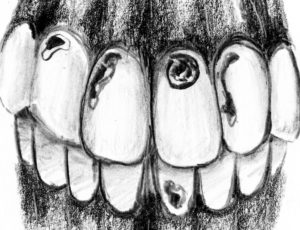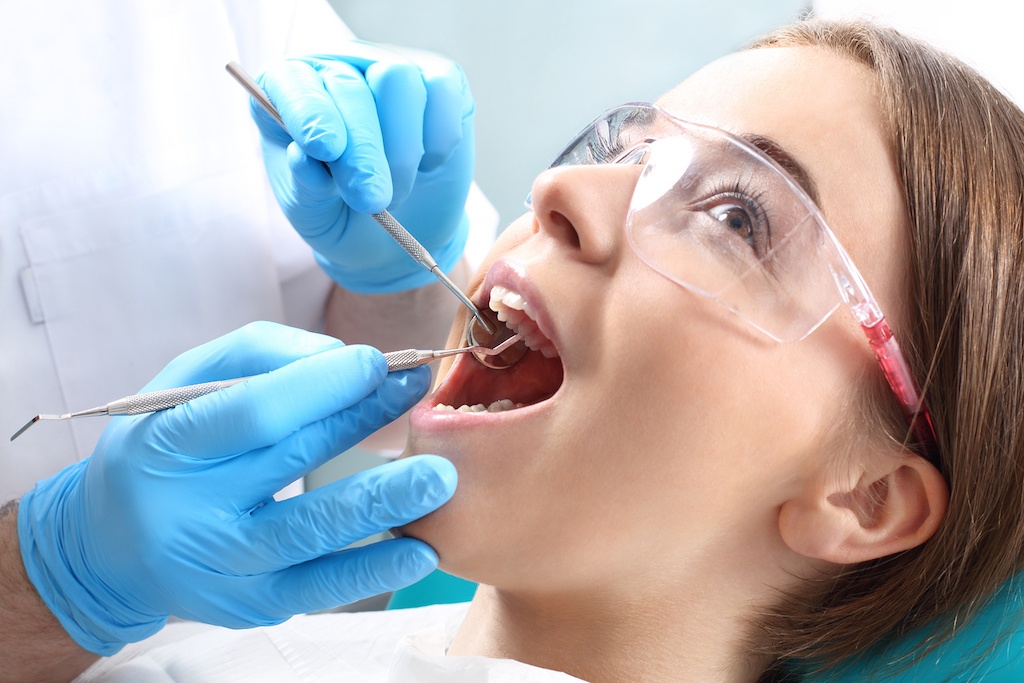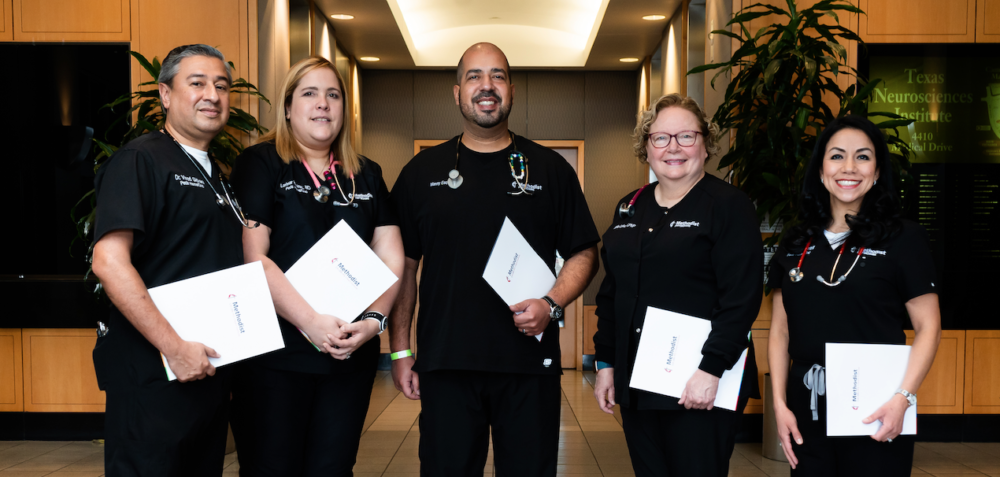A toothache is no joke! It may just be the worst pain you’ll ever experience. Furthermore, it will probably keep you up at night, prevent you from eating, and more than likely, render you useless at work. So what exactly is a cavity, and why is it so darn painful? More importantly, how can we keep from getting one? Let’s start by looking at the word cavity.
By definition, a cavity is a hollowed out space or an unfilled space within a mass. But it doesn’t take a genius to figure out that not all cavities look like a gigantic crater that lies in the middle of your tooth. The proper or scientific term is caries. Caries is a progressive destruction of bone or tooth. In the dental field we call it tooth decay.
Tooth decay is caused mainly by acid which is introduced to the mouth in two possible ways. The first way is the consumption of acidic foods or beverages. The second comes from the byproduct of sugar and bacteria that live around your teeth as plaque. Bacteria called streptococcus mutans feed on sugar and create acid that in turn attacks your tooth. So think twice before you pick up that candy bar!
 Acid breaks down the molecular structure that makes up tooth enamel and dentin. Enamel and dentin are the two components that protect the “pulp.” The pulp is where the blood and nerve supply are centrally located in your tooth. Once decay reaches the pulp chamber, we have lost the battle to dental caries. However, we were created with a great defense system. Enamel is the hardest substance in the body, and it can take an extreme amount of stress and forces put on it. So if enamel is a super substance, acid is its kryptonite! So be mindful of what you’re eating and drinking.
Acid breaks down the molecular structure that makes up tooth enamel and dentin. Enamel and dentin are the two components that protect the “pulp.” The pulp is where the blood and nerve supply are centrally located in your tooth. Once decay reaches the pulp chamber, we have lost the battle to dental caries. However, we were created with a great defense system. Enamel is the hardest substance in the body, and it can take an extreme amount of stress and forces put on it. So if enamel is a super substance, acid is its kryptonite! So be mindful of what you’re eating and drinking.
Preventing cavities is easier than you think. So why don’t we do it? I believe we get lazy and don’t do what we’re supposed to! Brushing with fluoride toothpaste, flossing once a day, and routine cleanings with a hygienist are the most important preventative measures we can take. Doing these three things can stop cavities before they start.
Furthermore, if a cavity happens to sneak one passed the goalie, we have a fail-safe system. The first sign of a cavity that reaches the dentin is tooth sensitivity. Whether it is hot foods, cold drinks or sweet candy, your tooth will let you know that something is wrong! Don’t ignore the signs! As soon as you start getting these pains, go see a dentist. Don’t wait until the pain goes away or gets to the point where it’s unbearable. A cavity doesn’t go away!
“Remember, you don’t have to brush all your teeth, just the ones you want to keep!” –Dr. J.C. Perez IV
If the pain stops, it may signify a more detrimental situation. This usually means that the bacteria has reached the pulp chamber and killed the nerve. If left alone, bacteria will travel down your roots and into the jaw bone resulting in what we call an abscess. An abscess can be extremely painful and can lead to more serious health issues if left untreated.
Successfully fixing a tooth that has gotten to the abscess stage is difficult provided you don’t want to start yanking out your teeth. If the tooth is still salvageable, it most often requires a root canal and crown. These procedures can add up financially, but they can easily be avoided with a little attention and care. A routine check up every six months is very important. Just because you don’t feel any discomfort doesn’t mean cavities are not present. Dental X-rays can detect small cavities in enamel way before you can see or feel them. A small filling may just save you from getting huge abscess!
Lastly, doing your part at home with brushing and flossing can save you from expensive dental work. Remember, you don’t have to brush all your teeth, just the ones you want to keep!







Recent Comments